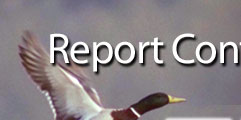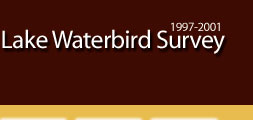 |
 |
 |
||||||||||||
 |
 |
 |
 |
 |
 |
 |
 |
|||||||
|
Preface • Introduction • Study Objectives • Community Participation • Regional, Physical and Ecological Setting Methods • Survey Protocol • Surveyors • Data Compilation • Data Analysis Results • Migration Chronology • Breeding Species • GSL Species Accounts • Species Distribution Discussion • Recommendations • Acknowledgements • Definitions/Abbreviations • Literature Cited Report & Appendices: 1 • 2 • 3 • 4 • 5 • 6 • 7 • 8 21-Year Waterbird Survey Synopsis & Appendices: 1B • 2B • 4B • 5B • 6B • 8B
|
Survey Area DescriptionsEach survey area is described and evaluated as to habitat type, accessibility, visibility, waterbird use, and actual survey coverage (Appendix 4). Five-year mean counts by species are displayed in a table for each area. These counts are the same values that are mapped by species in the Species Accounts. Species densities are also listed for each area. Calculated with ArcView software and geo-referenced topographic maps, area sizes are a rough estimate. In general, shoreline areas had good visibility and virtually complete coverage. Large, wetland areas often were difficult to survey completely because of lack of surveyors, poor accessibility, or limited visibility. Species densities for these areas were figured with the area size actually surveyed, as estimated by the participants or area managers. This was done in an effort to make the density values more comparable between areas. |